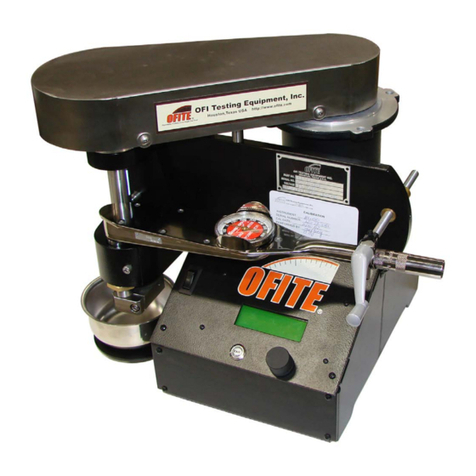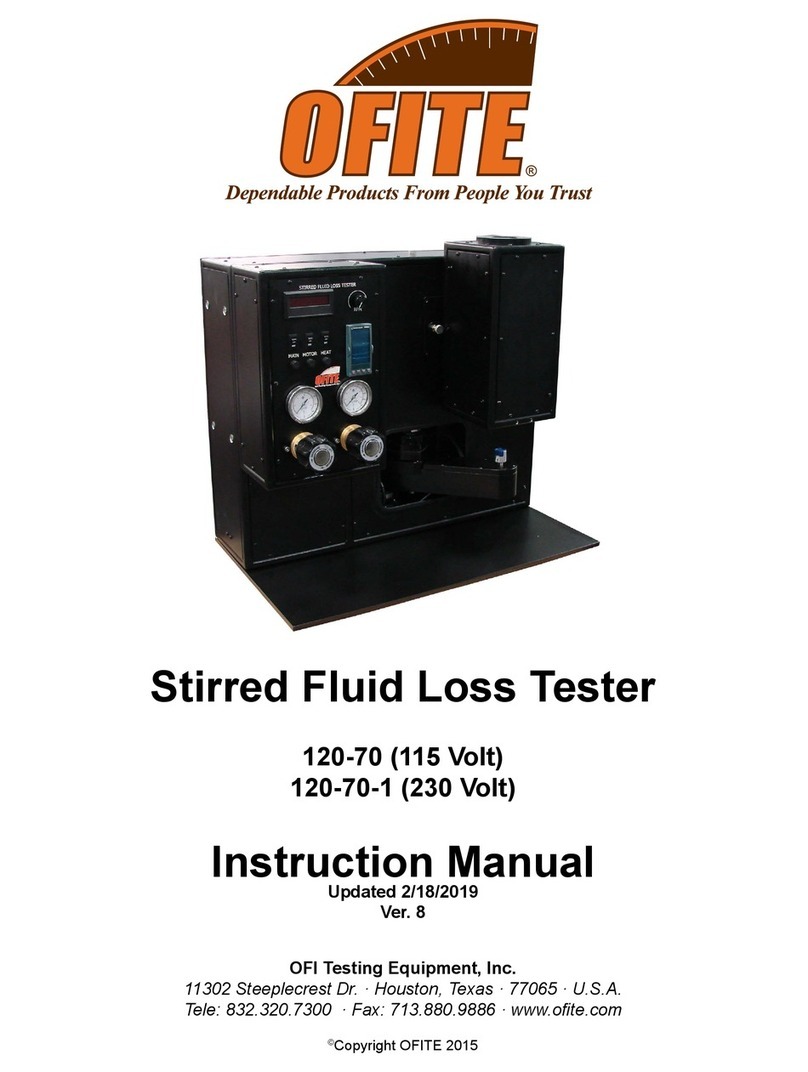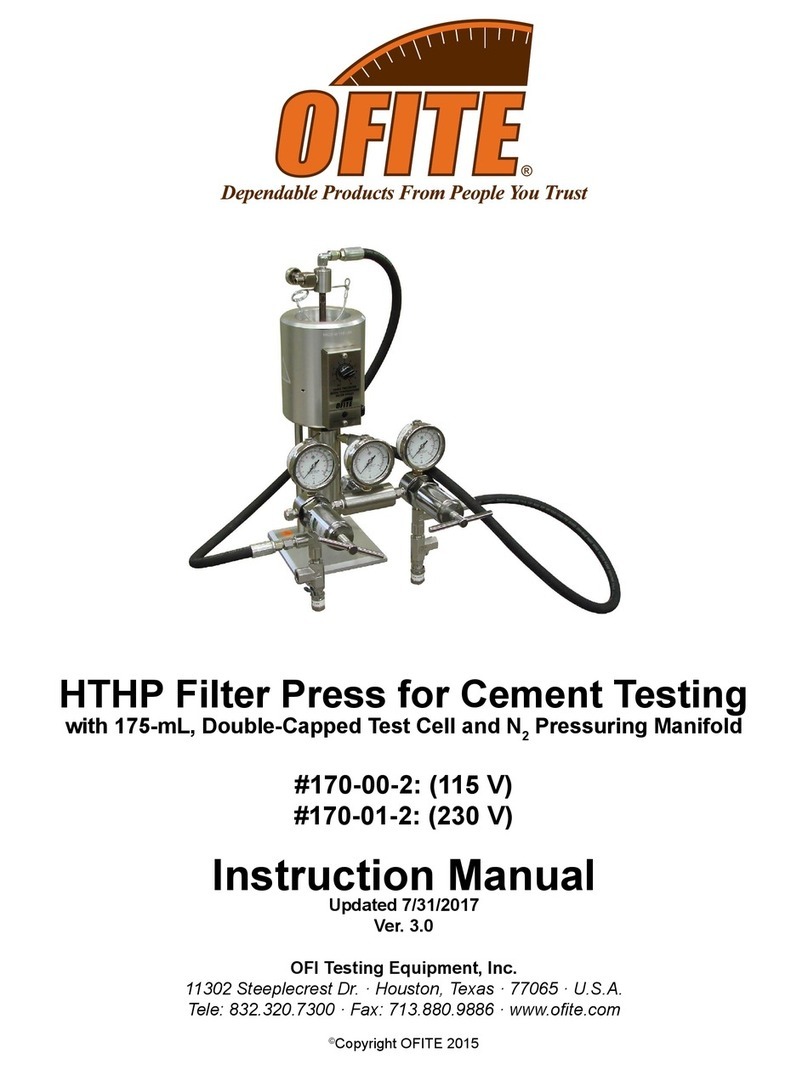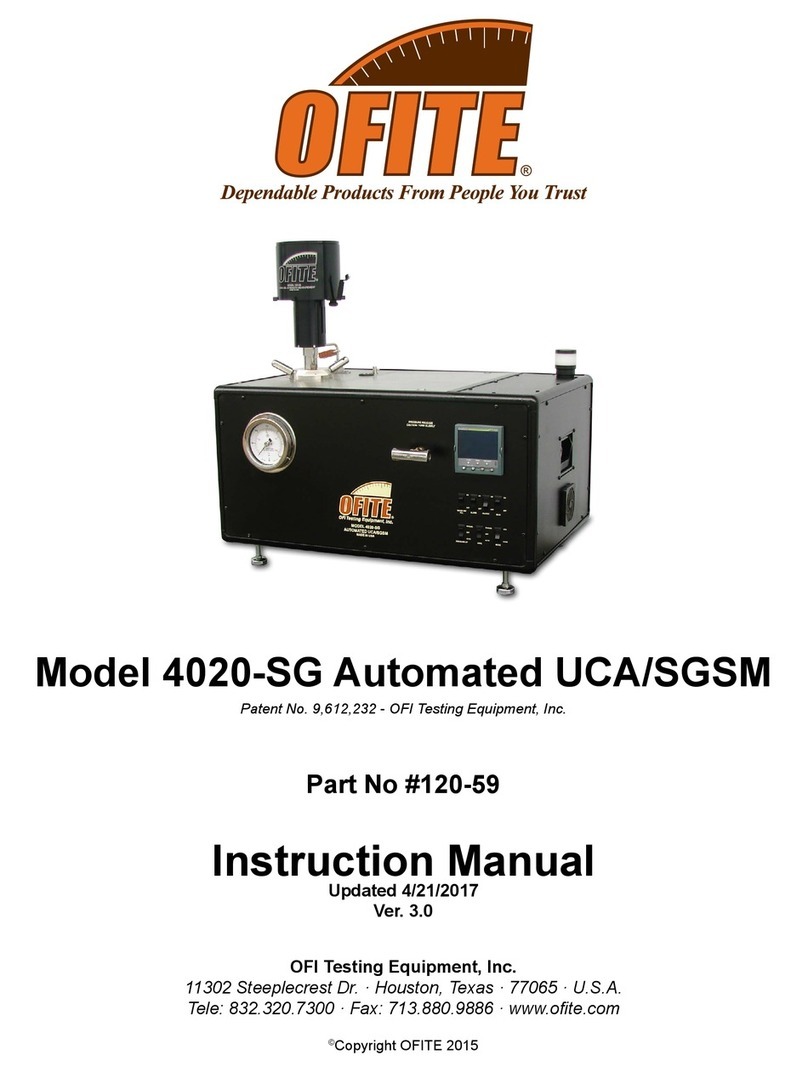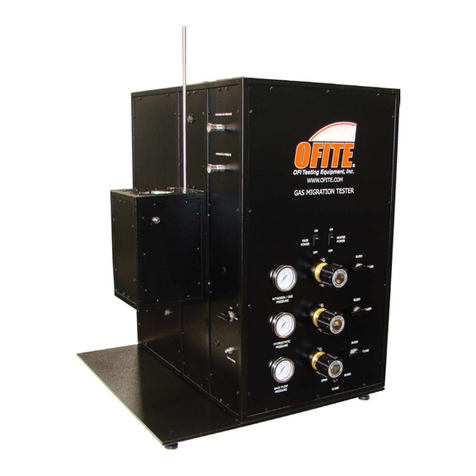The OFITE Gauge-Read Calcimeter and the OFITE Recording Calcimeter
are used to determine the amount of Calcium Carbonate (CaCO3) and
Magnesium Carbonate (Dolomite) in a sample of alkaline earth carbonates
such as oil well cores or drilled cuttings. Calcite build up in drilling fluids
and in water treatment processes causes scaling problems. Data from the
OFITE Calcimeters can help determine the proper chemical treatment.
These instruments comply with the ASTM D 4373 - 84 (Reapproved 1990)
Standard Test Method for Calcium Carbonate Content in Soils. This test
method is under the jurisdiction of ASTM Committee D-18 on Soil and Rock
and is the direct responsibility of Subcommittee D -18.13 on Marine
Geotechnics, published July 1984.
In the OFITE Calcimeter, calcium carbonate and magnesium carbonate are
reacted with 10 percent hydrochloric acid in a sealed reaction cell to form
CO2. As the CO2is released, the pressure build up is measured using
either a pressure gauge or a pressure recorder. During the calibration
process, a calibration curve is created by reacting HCl with pure, reagent-
grade CaCO3. By using a known weight of CaCO3reagent, you can deter-
mine the relationship between the amount of pressure released and the
weight of CaCO3in the sample. Since all reaction cells are slightly differ-
ent, this relationship will be different for each cell. Therefore a calibration
curve is required to obtain accurate results.
The calcium carbonate content of soil (ASTM Procedure D 4373) is deter-
mined by treating a 1 g dried soil specimen with HCl in the reactor cell.
The resulting pressure increase is then measured and compared to the cal-
ibration curve to determine the total weight of CaCO3in the test sample.
The OFITE Gauge-Read Calcimeter (152-95) features a pressure gauge on
top of the reaction cell. With this model, the pressure within the reaction
must be manually read from this gauge.
The OFITE Recording Calcimeter (152-96) includes a transducer and a
chart recorder that automatically records the pressure readings without
user intervention. This model was designed to make the test procedure
easier by enabling you to run it virtually unattended.
OFITE, 11302 Steeplecrest Dr., Houston, TX 77065 USA / Tel: 832-320-7300 / Fax: 713-880-9886 / www.ofite.com 2
Description
Intro














